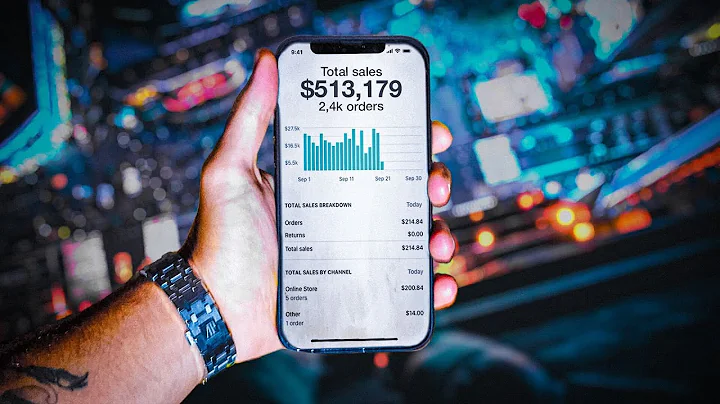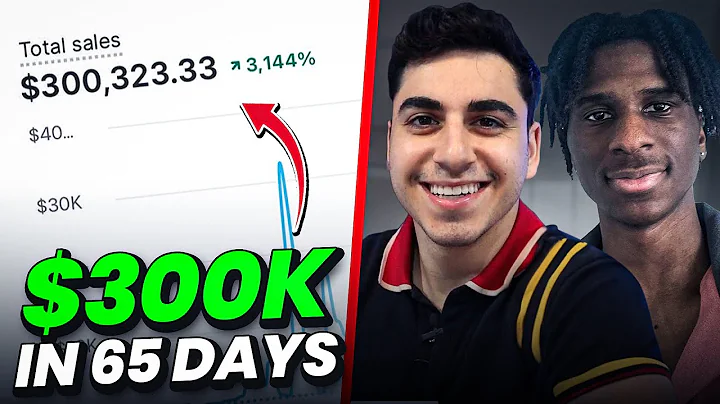Maximizing Facebook Ads with Lookalike Audiences
Table of Contents
- Introduction
- Understanding Look-alike Audiences
- Creating a Look-alike Audience
- Combating Overlap in Look-alike Audiences
- The Power of Custom Audiences
- Targeting Strategies for Look-alike Audiences
- Best Practices for Look-alike Audience Campaigns
- Case Studies: Success Stories with Look-alike Audiences
- Common Mistakes to Avoid with Look-alike Audiences
- Conclusion
Introduction
In the world of e-commerce business, utilizing effective advertising strategies is crucial for success. Facebook ads have become a popular choice for many e-commerce businesses, but one powerful tool that often goes overlooked is look-alike audiences. In this article, we will explore the strategy behind using look-alike audiences and how it can significantly impact the success of your Facebook ads.
Understanding Look-alike Audiences
Look-alike audiences are a feature provided by Facebook that allows advertisers to reach new users who share similar characteristics to their existing customers. It works by analyzing the demographic data, interests, and behaviors of your current customers and finding other Facebook users who match those traits. This allows you to target a larger audience that is more likely to be interested in your products or services.
Creating a Look-alike Audience
To create a look-alike audience, you need to have a source audience to base it on. This source audience can be your page views, purchases, initiate checkouts, or add to cart actions. By selecting a specific source audience and setting the desired audience size (usually 1%), Facebook will generate a new audience that shares similar traits to the source audience.
Combating Overlap in Look-alike Audiences
One common issue with look-alike audiences is overlap between different audience segments. For example, there may be users who are part of both the page view and add to cart look-alike audiences. To combat this, you can exclude certain segments from each look-alike audience. By excluding purchasers, add to cart, or page view actions from specific look-alike audiences, you can ensure that each audience segment is unique and avoid saturating your targeting.
The Power of Custom Audiences
Custom audiences play a crucial role in maximizing the effectiveness of look-alike audiences. By creating custom audiences for page views, add to cart, and purchases, you can capture specific user actions and use them as a source for look-alike audiences. This allows you to build a more accurate and targeted audience, increasing the chances of generating quality leads and conversions.
Targeting Strategies for Look-alike Audiences
When targeting look-alike audiences, it is important to consider your campaign objectives, budget, and audience size. You can experiment with different look-alike audience sizes, such as 1%, 2%, or even smaller percentages, to determine what works best for your business. It is also advisable to test different ad creatives and messaging to see which resonate most with your look-alike audiences.
Best Practices for Look-alike Audience Campaigns
To maximize the effectiveness of your look-alike audience campaigns, it is essential to follow best practices. These include regularly updating your source audience to ensure it remains relevant, constantly monitoring and optimizing your campaigns, using compelling ad creatives and messaging, and testing different targeting options to find the most engaged audience.
Case Studies: Success Stories with Look-alike Audiences
Several businesses have achieved impressive results through their look-alike audience campaigns. In this section, we will explore case studies from various industries to showcase how look-alike audiences have helped them reach new customers, increase conversions, and drive revenue growth.
Common Mistakes to Avoid with Look-alike Audiences
While look-alike audiences can be a powerful tool for Facebook advertising, there are common mistakes that advertisers should avoid. These include targeting too broad or too narrow of an audience, not properly excluding overlapping segments, neglecting to test and optimize campaigns, and not aligning ad creatives with the audience's interests and preferences.
Conclusion
In summary, look-alike audiences can significantly enhance the success of your Facebook ad campaigns for e-commerce businesses. By understanding the strategy behind creating and leveraging look-alike audiences, you can effectively target a wider audience that is more likely to engage with your ads and convert into customers. By following best practices and avoiding common mistakes, you can maximize the potential of your advertising efforts and drive substantial growth for your e-commerce empire.
Highlights
- Look-alike audiences are a powerful tool for e-commerce businesses utilizing Facebook ads.
- Creating a look-alike audience involves selecting a source audience and setting the desired audience size.
- Combating overlap in look-alike audiences can be done by excluding specific segments from each audience.
- Custom audiences play a crucial role in maximizing the effectiveness of look-alike audiences.
- Targeting strategies and best practices are essential for successful look-alike audience campaigns.
FAQ
Q1: What is the purpose of look-alike audiences?
A1: Look-alike audiences allow advertisers to target Facebook users who share similar characteristics to their existing customers, increasing the chances of conversions.
Q2: How can I combat overlap in look-alike audiences?
A2: By excluding specific segments from each look-alike audience, you can ensure unique targeting and avoid saturating your ads.
Q3: What are some best practices for look-alike audience campaigns?
A3: Best practices include regularly updating your source audience, optimizing campaigns, using compelling ad creatives, and testing different targeting options.
Q4: Can you provide examples of businesses that have achieved success with look-alike audiences?
A4: Yes, case studies from various industries showcase the impressive results obtained through look-alike audience campaigns.
Q5: What mistakes should I avoid when using look-alike audiences?
A5: Common mistakes include targeting too broad or narrow of an audience, not properly excluding overlapping segments, neglecting testing and optimization, and not aligning ad creatives with the audience's interests.


















